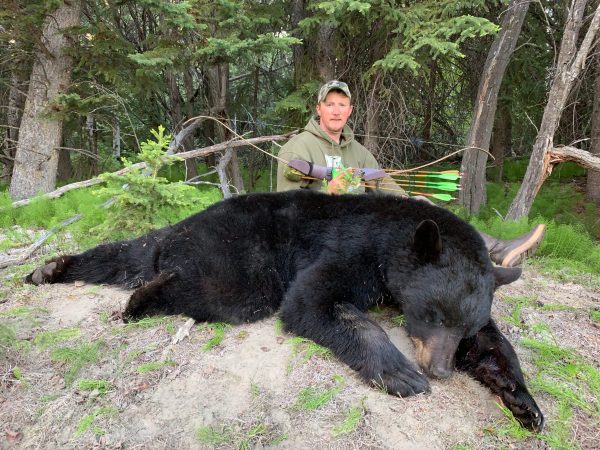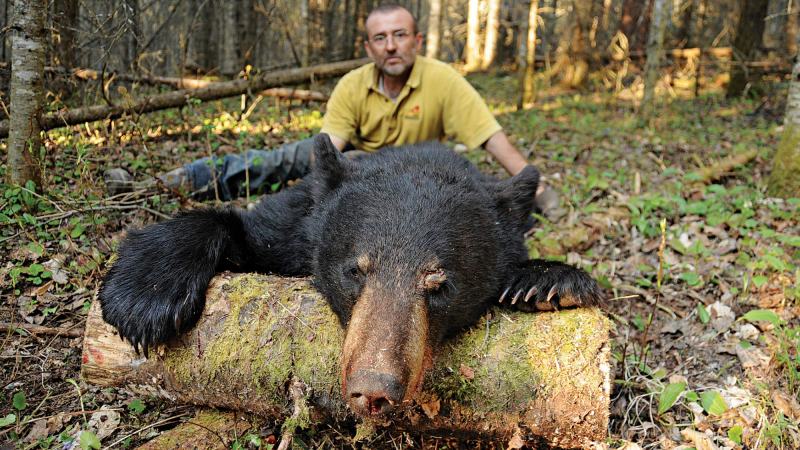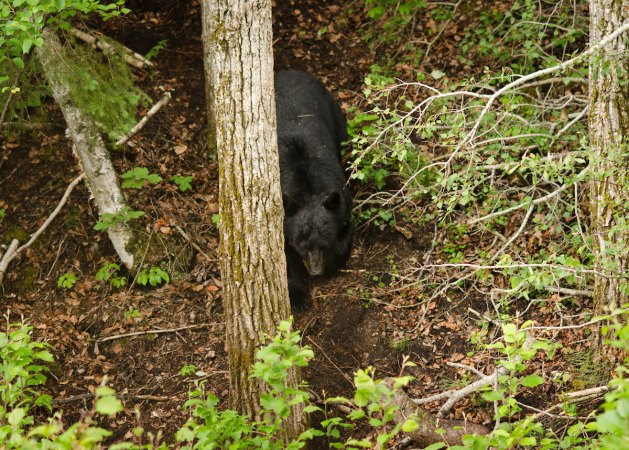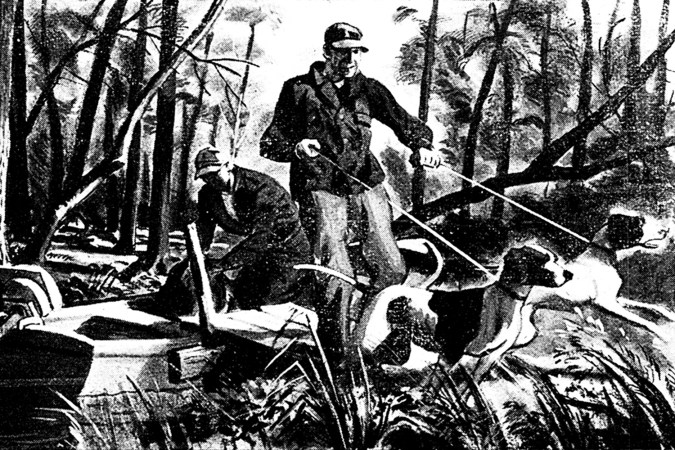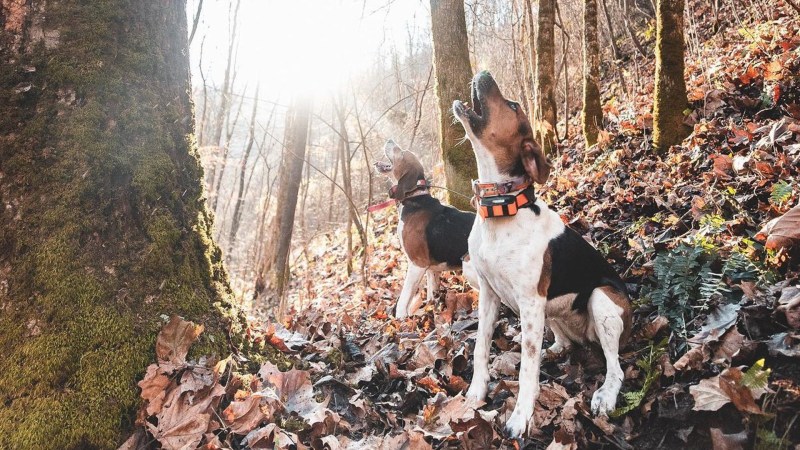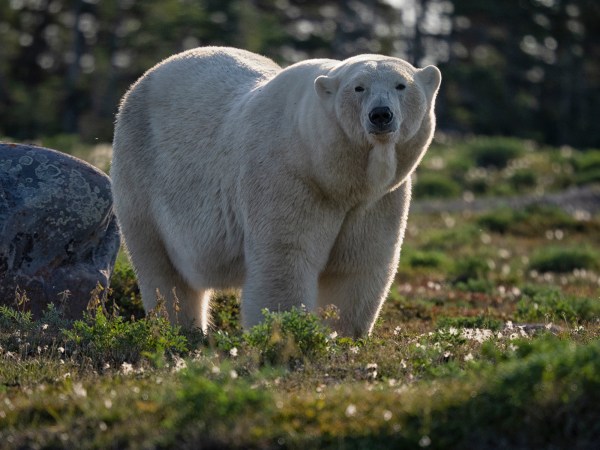What do black bears eat? You name it, and a black bear will probably eat it. Generally speaking, black bears eat vegetation, berries, nuts, insects, fish, and meat. Bears are omnivores whose diet varies based on the region where they live, but even more on the changing seasons. They’re also opportunistic, which means they won’t turn down an easy meal. That’s why black bears are often caught dumpster diving and raiding backyard bird feeders.
Still, black bears have plenty of preferred foods, and knowing what a bear likes to eat during a specific time of year is key for scouting, targeting them over natural food sources, or running bear baits. While this article does not contain an exhaustive list of every single leaf, grass, berry, and bug a black bear will eat, it will provide enough concrete examples that are relevant to the bears in your area. If you want more information about the plants and insects native to your state, your best bet is to find your state wildlife agency’s information on black bears.
Table of Contents

Click on one of these topics below to jump around to detailed lists of what black bears eat, or just read straight through the story.
What Black Bears Eat Depends on the Season
Black Bears Eat Mostly Plants…
Grasses, Leaves, and Crops
Soft Mast
Hard Mast
Crops and Food Plots
…But They Do Eat Bugs, Fish, and Meat
Insect Food Sources
Other Animal Food Sources
The Best Black Bear Bait
Common Black Bear Baits
Bear Attractants in Populated Human Areas
FAQs
What Black Bears Eat Depends on the Season
To understand what a black bear is eating, you need to first consider the time of year.
If it’s the dead of winter, the answer to the question “What do black bears eat?” is probably nothing at all. Although most people believe bear hibernation is a months-long stretch where bears fall asleep in autumn and don’t stir until spring, that’s a misnomer. Bears are not true hibernators. Instead, they seek dens in the winter when food becomes scarce. In fact, as long as a bear isn’t experiencing an energy deficit—when foraging requires more energy than the forage itself provides—bears don’t need to den. (Typically those bears are either boars or sows with yearling cubs; pregnant sows give birth in the den overwinter.)

As a general rule, black bears do not eat during a den cycle. Cubs will nurse and drink milk (and sows will actually eat the droppings of their newborn cubs), but that’s about it. Bears conserve their energy by sleeping often, moving little, and subsisting on the fat stores they built up last fall. As soon as a bear leaves the den in the spring, though, food becomes its primary focus.
“Bears will be emerging from dens anywhere from mid February to mid- or late-April depending on their [cub] status and sex, and they immediately begin to recover the weight they lost during the den cycle,” says Myron Means, the large carnivore program coordinator for the Arkansas Fish and Game Commission. “They’re eating a lot of grasses and doing a lot of rock-rolling [to find] insects. That’s the bulk of their diet until the berry crop gets ripe.”
Black bears, says Means, have a tendency to find one food source and eat it until it’s exhausted.
“Bears are kind of unique,” says Means. “There are different plants that fruit at different times in the summer, and bears just transition from one to the next and the next, [eating] almost exclusively on that food source. Blackberries are usually [ripe] first, then bears transition to wild cherries, then sassafras and pokeberries later on in the summer, then elderberries.”

After the mating season (usually May through July) and as fall approaches, black bears enter what’s called hyperphagia, says Means, where bears just gorge themselves on whatever they can eat to build their fat stores ahead of the next den cycle. So just how much do black bears eat?
“When they’re going through this hyperphagic phase, they may eat 20,000 calories a day,” says Means, “which is a lot of food when you’re talking about mostly soft mast like berries.”
Here’s another way to think about that. Black bears can eat up to 45 pounds of food a day when forage is abundant, putting on five pounds of weight in preparation for winter, according to Montana Fish, Wildlife and Parks.
Black Bears Mostly Eat Plants…

Although black bears are omnivores, plants make up the bulk of their natural diet. Based on the research reports he’s studied, Means says a black bear’s diet is usually 80 to 90 percent herbaceous material—that is grasses, leaves, berries, nuts, and agricultural crops. One study of Texas black bears, for example, found that bears diets were 77 percent plant-based in the spring, and 86 percent plant-based in the summer.
In the early spring, black bears target tender green shoots and weeds like dandelions before switching to ripe berries throughout the summer, then gorging themselves on hard mast like nuts in the fall. Specific examples of natural plant forage include:
Grasses, Leaves, and Other Plants
- Agave
- Aspen leaves
- Beech leaves
- Clover
- Dandelions
- Desert spoon sotol
- Dogwood
- Jewelweed
- Pokeweed Leaves
- Roots and tubers
- Rye grass
- Sassafras
- Skunk cabbage
- Wild lettuce
- Yucca
Soft Mast Food Sources
- Apples
- Autumn olive berries
- Blackberries
- Black gum berries
- Blueberries
- Buckthorn berries
- Chokeberry
- Devil’s walking stick fruit
- Elderberries
- Huckleberries
- Mulberries
- Pears
- Persimmons
- Pokeberries
- Raspberries
- Serviceberries
- Wild cherries
- Wild grapes
Hard Mast Food Sources
- Acorns (especially white oak acorns)
- Beechnuts
- Black Walnuts
- Chestnuts
- Hazelnuts
- Hickory nuts
- Pine nuts
One reason black bears have to eat so much plant matter to gain weight is because they have a short gut, says Means. Their gut “was really engineered to be a carnivore’s gut, but they evolved to eat a more herbaceous diet.”
Black bears have short guts that can’t fully absorb all the nutrients from plant matter—whether it be berries or grasses. This is one reason it’s usually so easy to identify bear scat: It’s usually full of whole berries and seeds. Examining bear scat is also a great way to determine what foods a bear has been targeting.

A Note on Crops and Food Plots for Bears
Black bears do target crops like corn and winter wheat, says Means, although corn generally isn’t great for black bears because their digestive systems can’t process it very well.
“I’ve seen where bears will walk through food plots just stripping the wheat heads and eating nothing but those,” says Means. “Then they’ll leave scat around these food plots and the scat is nothing but a log of wheat heads.”
Black bears prefer clover among many other crops, and it’s a good choice if you’re interested in planting food plots for a variety of wildlife, since deer and turkeys also use clover plots.
…Black Bears Do Eat Bugs, Fish, and Meat
Of the 10 to 20 percent of a black bear’s diet that does not come from plant matter, says Means, most of that animal protein comes from insects. Here are some common insects that black bears are known to eat:
Insect Food Sources
- Ants
- Beetles
- Caterpillars
- Grubs
- Honey bees
- Hornets
- Termites
- Walking sticks
- Yellowjackets
One common misconception about bears is that they love honey, but that’s not what they’re really after when they raid a hive.
“Bears are more interested in the larvae,” says Means. “The honey is a great reward, but the larva has all the protein. That’s why most bears will raid beehives when the hives are going good and strong, and they’ve got full frames of larvae in June and July.”
As for the true amount of meat that makes up a bear’s diet, Means estimates that black bears—in Arkansas, at least—rely very little on mammal protein.
“The true meat in a bear’s annual diet accounts for maybe one percent,” says Means. “It’s just not much at all.”
When a black bear does eat an animal, it’s usually the result of opportunity rather than because that bear specifically hunted a particular critter.

“Bears will eat carrion. I’ve seen sows actually pull roadkill deer off the road and eat off it for a couple days,” says Means of the back bears he’s observed in Arkansas. “Of course, they’d pounce on a deer fawn if they had an opportunity. But bears don’t really actively hunt fawns. They’re so consumed with just getting whatever food they can. It’s a lot of effort for a little reward for a fawn and they’d rather just belly up into a blackberry patch when the berries are ripe rather than try to hunt a fawn down.”
Still, black bear predation rates of mammals like deer fawns and elk calves differ regionally. In one Pennsylvania study of 165 GPS-collared whitetail fawns, researchers found that black bears were responsible for killing 23 fawns, or 14 percent—more than any other predator in the study. (Coyotes killed 14 fawns, bobcats killed seven, and a handful of other predators could not be identified.)

In one study of moose predation in Southeast Alaska, researchers found that black bears averaged one moose calf kill every 40 days, and no black bears were documented killing adult moose. Predation rates, researchers noted, were “highly variable among individual bears.” Another study of elk calf survival in New Mexico determined that “the primary cause for summer [elk] calf mortality across all years was black bear predation.” Higher hunter harvest of black bears was linked to better elk calf survival rates, with researchers noting that for “every additional bear harvested in spring, radio-collar tagged elk calves were 2.4 percent more likely to survive the summer.”
While these studies do indicate that black bears are often the top predator of newborn ungulates, they do not tell us what percent of a bear’s diet consists of fawns or calves. Still, it’s crystal clear that black bears do indeed eat meat.
Other Animal Food Sources
- Bird eggs
- Birds (grouse, geese, etc.)
- Carrion and roadkill
- Crawdads
- Deer fawns
- Elk calves
- Fish (trout, salmon, etc.)
- Hogs
- Moose calves
- Mussels
- Rodents (mice, rabbits, etc.)
The Best Black Bear Bait
If you ask 10 black bear hunters what their favorite bait for black bears is, you’ll probably get 10 different answers. I once hunted with an outfitter in Saskatchewan who froze whole beaver carcasses, then sawed them in half and tossed the meat in bait barrels with oats, cooking oil, and the occasional hog quarter. The bears up there liked that just fine.
Read Next: The Best Bear Cartridges
But if you don’t have access to beaver carcasses or a crew of guides to freshen such heavy, messy bait, or if baiting with meat is illegal in your area, there are easier options. Because black bears eat just about anything, Means chooses black bear bait with affordability and convenience in mind.
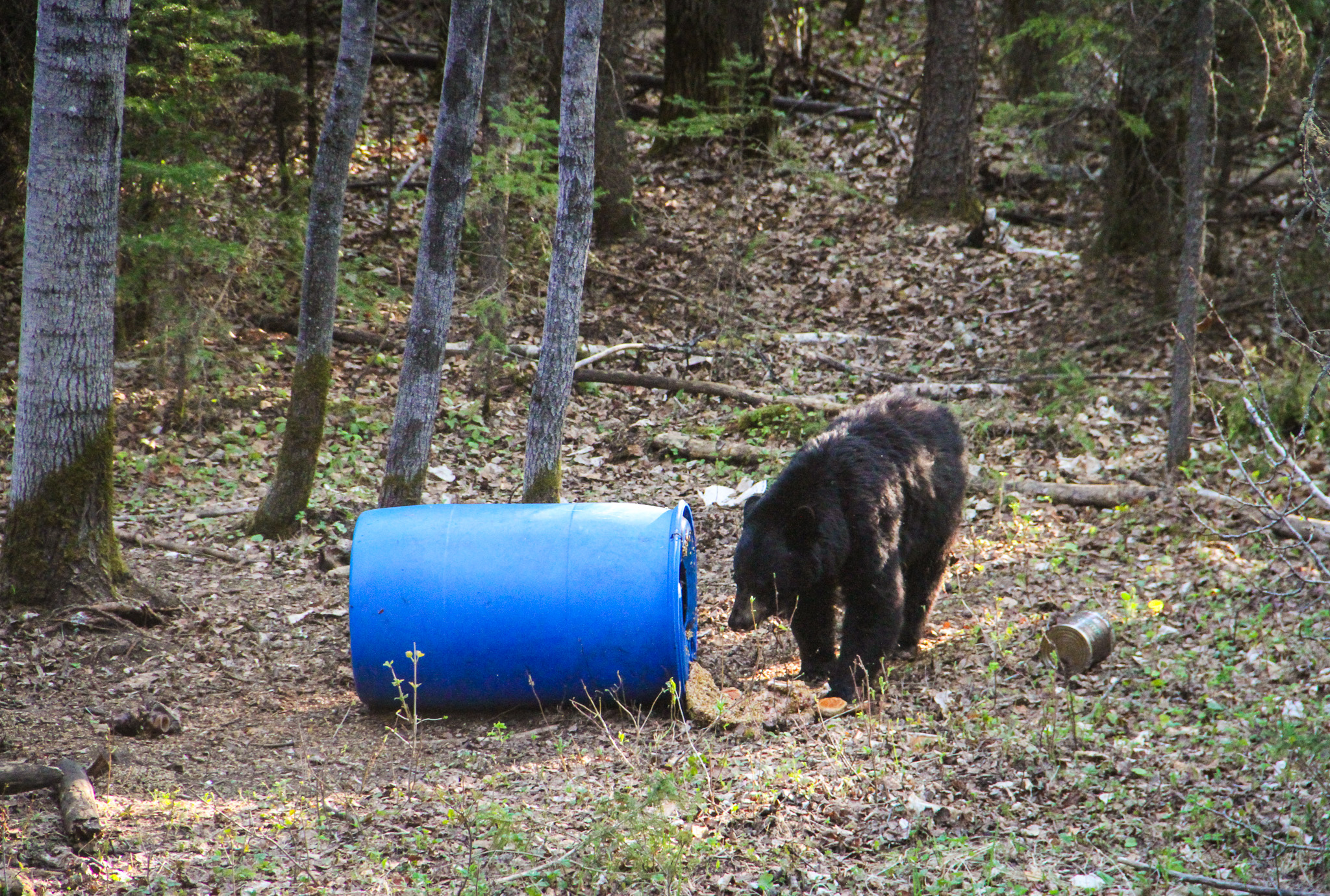
“I buy the cheapest bait I can get in large quantities, so I buy dog food in bulk,” says Means, who runs six barrels for six hunters (including himself) on his hunting lease. “I’ll feed over a ton of dog food in a season. You want something that has a pretty good protein content, but bears also need plenty of carbs.”
Means puts used cooking oil on the dog food to increase the bait’s fat content and also to help create a scent trail from his bait. If one bear gets cooking oil on its paws and pads away into the woods, Means says it’s easier for another bear to cut its scent and find the bait barrels.
“The best bear bait is anything you can have out there—dog food or pastries or whatever—that a bear can get to before the mast crop hits,” says Means. “Because once the mast crop hits, there’s nothing you can put in a bait barrel that a bear will go to before a bear goes to acorns. It’s just that simple. Acorns are a bear’s prime rib, and that’s what they have evolved feeding on.”
Means says he’s never had much luck with white bread, which he’s mixed in with his bait and noticed black bears tend to pick around. He also advises against using corn.
Read Next: Where to Shoot a Bear
“I think corn is a horrible bear bait. Corn doesn’t really have that much nutritional value to a bear. They can’t really assimilate corn like a deer can. A deer has four stomachs and can glean every little bit of nutrient out of corn whereas a bear’s gut is short and they need something they can process easier and quicker.”
Common black bear baits
- Bread
- Candy
- Cooking oil
- Dog food
- Donuts and other pastries
- Oats
- Popcorn
- Meat scraps
Bear Attractants in Populated Human Areas
Because black bears are opportunistic feeders, homeowners often receive unwanted visits from bears who are looking for an easy meal. Almost always, says Means, these bears are sub-adult males who have been pushed out of the best natural forage spots (like all the choice berry patches) by dominant bears and are just “walking stomachs.”

“Out of 75 to 150 average ‘nuisance bear’ complaints per year, I’d say 98 percent of them are food-driven complaints,” says Means. “Rarely do we actually have a [true] nuisance bear situation where it’s getting into beehives or it tore into someone’s cabin to get soda cans. It’s almost always sub-adult bears and a food-related attractant … The easiest solution? You remove the food, you remove the bear. It’s just that simple.”
Common Black Bear Attractants
- Birdseed
- Cat food
- Corn
- Chickenfeed
- Dog food
- Fruit trees
- Grease
- Grills or BBQs
- Trash containing attractive food sources
- Vegetable gardens
FAQs
A brown bear eats the same foods as a black bear (especially when it comes to vegetation and berries), but given that brown bears live in coastal areas, their diet is much more dependent on fish. The brown bears in Katmai National Park, for instance, can eat up to 40 salmon in a day while preparing for winter. The bears eat the most fatty, calorie-dense parts of the fish—like the brain, skin, and roe—and leave the leaner fillets behind. Brown bears are also more likely to prey on newborn ungulates (like fawns and moose calves) than black bears, and are also more likely to attempt killing adult ungulates.
A black bear’s favorite foods are usually berries and white oak acorns. Black bears in Arkansas, for instance, favor blackberries, while a study of Pennsylvania black bears showed bears preferred wild cherries in the summer. In the fall, even hunters hoping to attract black bears with bait barrels of dog food and donuts are going to have a hard time drawing bears when there’s a good white acorn crop in the woods.
Yes, black bears like cat food. It doesn’t matter if it’s wet or dry cat food, either. Black bears love an easy meal, so if a bear stumbles across a bowl of Meow Mix in your backyard, he’s going to help himself. The only reliable way to prevent a black bear from eating your cat food is to feed your cats inside.
Final Thoughts

So, what do black bears eat? Black bears are opportunistic eaters, which means they’ll eat just about anything they come across. They are also omnivores, and though they do eat insects and the occasional whitetail fawn or fresh-caught fish in non-coastal areas, the bulk of their diet consists of vegetation and hard and soft mast like grasses, berries, and nuts. A black bear’s diet is heavily dependent upon seasonally-available forage, and they eat up to 20,000 calories a day during the months before a denning cycle in order to pack on as many pounds as possible.



